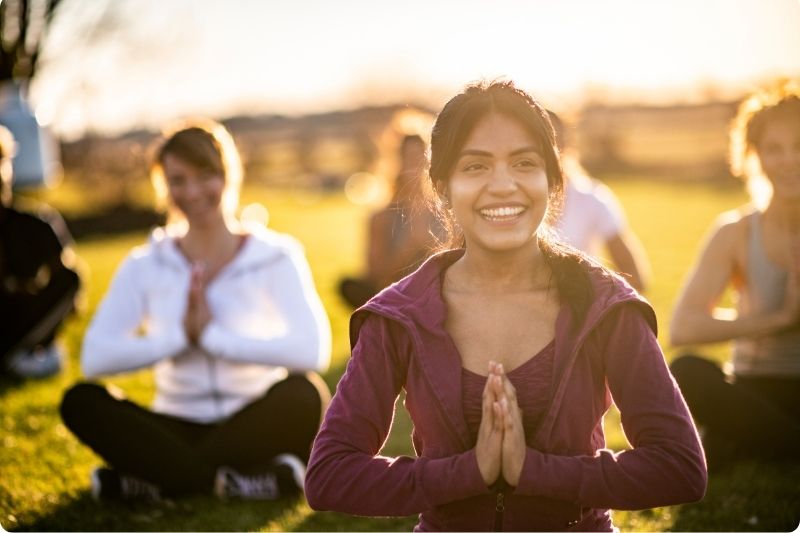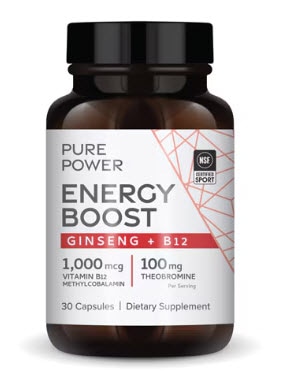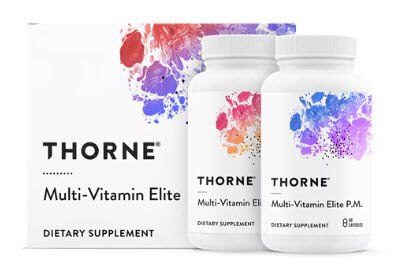Does the thought of trying to schedule another workout into your already packed schedule make you feel slightly anxious and nauseous? Or have you ever gotten up and been so sore from your previous workouts that it’s physically difficult for you to step up onto an elliptical, but you do it anyway because you live by the motto, “no pain, no gain?” Perhaps you’ve been overzealous the night before and consumed way too much pie and ice cream, so you wake an hour earlier than usual to fit in an additional round of cardio, even though you’re exhausted. In that case, you may benefit from exploring intuitive movement.
Intuitive eating versus intuitive exercise
Perhaps the term “intuitive movement” makes you think of the popular dance craze that started in the ‘70s and ‘80s called Ecstatic Dance, where participants gather in groups to dance in free form styles that are completely unchoreographed. Well, that’s not quite what intuitive exercise involves. It was introduced by dietitians Evelyn Tribole and Elyse Resch in their book Intuitive Eating, originally published in 1995, and reemerged when the pandemic locked down gyms and exercise studios. Even as gyms began opening their doors again, people were beginning to question their unfaltering commitment to excessive physical activity. Instead, they turned to a more intuitive approach that required them to connect with their body, to determine what type of exercise or movement was needed for that particular day. This type of movement is considered today to be a more balanced response to the strict, ambitious diet and exercise culture which had previously dominated American culture for the past 20+ years.
Alissa Rumsey, a registered dietitian and Certified Intuitive Eating Counselor from Brooklyn, New York explains that “both intuitive movement and intuitive eating require you to look inwards for inspiration and the determination of what types of movement or food would be best at the moment, rather than relying on extrinsic motivation. In the case of intuitive movement this means asking yourself, what does my body need today? Or what type of movement do I feel like doing?”
Begin with a body scan
If you’re an avid exercise enthusiast, this less rigid approach may feel frightening. Likewise, if you’re just starting your physically active journey, you may also feel a bit confused or not sure where to begin. So just take a deep breath and start with a body scan.
“Check in and see how your body is feeling that day and what type of movement sounds good – rather than just exercising because you think you should,” Rumsey explains.
Are you tired, tender, motivated, jittery, or simply neutral? A body scan does not have to take a long time – all you need is a few minutes, and you can do it in almost any position anywhere. Perhaps start with your head and scan down to your toes, but however you like to connect with your body will suffice. What matters is that you are focusing on different body parts to see how they feel and are willing to become more self-aware of your overall physical and mental condition in that moment.
Banish the “all or nothing” motif
American culture tends to take a very black and white approach to diet and exercise, where if you slip in any way from your rigid limitations, (such as eating too much dessert) then your diet is basically broken or if you miss a single day of exercise, your entire routine is now worthless.
“When I work with clients on intuitive eating, they find it really scary at first to allow all foods and remove restrictions,” Rumsey adds, “They think they will only want to eat foods they previously restricted and will never find balance. Although they may feel out of control at first, as they begin to listen to their bodies, they find themselves craving a variety of foods. I think the exact same thing happens with intuitive movement. Your exercise routine may look different than when it was rigid, but it will be more joyful, more sustainable, and overall healthier.”
Moving intuitively accepts the notion that physical activity does not need to exist to simply tone and shrink you through punishing regimes. There is no need to do an exercise you do not like. If you’re dreading your next workout, what is the likelihood you’ll actually do it? And if you do it anyway, how is this building your self-esteem or sense of self-worth? Embracing forms of movement that make your body happier and calmer will help you stay curious, consistent, and will also help you build a kinder, more forgiving relationship with yourself.
The key is listening to your body and mind when you are preparing to exercise or in the middle of a workout. If you are doing what you think you “should” be doing, immediately take pause. The real question is should you be punishing yourself with a workout you really don’t have the energy for? Is there some other form of gentler movement you could adopt instead? Perhaps it’s time to take a walk with your dog or go through your favorite yoga poses. Perhaps it’s time for a nap, or simply incorporating an extra rest day so that you can recover more deeply from your previous activities.
5 ways to embrace moving intuitively
1. Make a list of your favorite types of movement or exercises you would like to try
“Be curious about how your body feels on different days and how it responds to different types of movement, both physically and emotionally,” Rumsey explains. “Once you can understand your body a bit more – know how to gather information and what types of information are helpful – you can make movement decisions from a place of healthy reaction, not rigid enforcement.”
2. Make a habit of checking in with yourself before beginning any physical activity
Ask yourself if the movement will serve your body. Why are you choosing to move today?
“It’s also important to be aware of the times you are using exercise as a compensatory mechanism, like for something you ate, or as a way to change your body – these are external motivations that don’t take your body’s needs into consideration,” Rumsey adds.
3. Step back from obsessively checking fitness tracking devices or apps
Also consider hiding or removing the calories burned or distance and speed information on your exercise equipment and focus instead on how you feel.
“If your exercise routine is causing you stress or anxiety,” Rumsey states, “Then it’s going to be counterproductive to your health goals.”
4. Allow an extra rest day and see how your body feels
Rest days are crucial to fend off burn out, boredom and potential injury! And taking breaks from exercise doesn’t mean you have no goals or commitment.
“Consistency is not off-limits with intuitive movement, only rigidity,” Rumsey explains. “Consistency that is motivated by physical and mental health rather than weight and allows for flexibility of type and frequency of movement including rest is perfectly healthy and within the definition of intuitive exercise.”
5. Incorporate flexibility in your training plans
“I equate training plans for intuitive movement to meal prepping for intuitive eating,” Rumsey states. “I definitely think it can be done and many of us require a bit of pre-planning in our schedules to stay sane. The key is flexibility. For a training plan, this could mean brainstorming different options for days when you want something less intense or more intense.”
How can you step away from rigid, strenuous exercise habits and move with more thoughtfulness and joy? The answers are as unique are you are. Once you realize that there are literally dozens of ways to incorporate movement into your life without the need to make it a penance or a punishment, then you are beginning to understand what intuitive movement is all about. Interested in that local Ecstatic Dance class? Now is the time to check it out! And don’t be afraid to rest and recuperate when you need to – life is not a robotic experience, and your relationship with movement shouldn’t be either!




